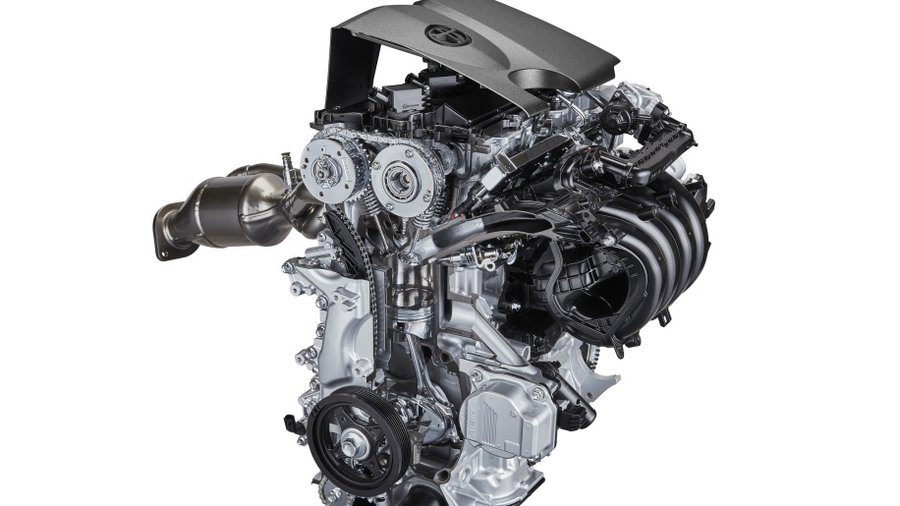Toyota creates world's most thermally efficient 2.0-liter gas engine

Toyota's R&D department just made a bunch of special deliveries. The Japanese carmaker announced a host of incrementally improved powertrain components for the Toyota New Generation Architecture (TNGA) that Toyota says will reduce its global fleet CO2 emissions by at least 18 percent. The headliner is a new 2.0-liter, four-cylinder, Dynamic Force Engine (DFE) with a 40 percent thermal efficiency, making it the world's most thermally efficient engine with that displacement. Fitted to a hybrid system, TE gets bumped to 41 percent, matching that of the 1.8-liter hybrid unit in the current Prius, but with a higher performance ceiling thanks to the larger displacement.
The 2.0-liter DFE cribs some of the advances made on that 1.8-liter engine, including a larger valve angle, and a heat recovery system that reduces energy losses in the coolant and exhaust systems. A teardown would also find laser-clad valve seats for an improved air/fuel mix, mixing port and direct injection depending on the load for better fuel efficiency, and reducing friction losses overall.
Capped at 169 horsepower, torque rises across the entire rev range, and Toyota expects the unit to comply with future exhaust regulations right now. The smaller, more economical hybrid unit not only means better thermal performance, it's programmed to draw more power from the battery under acceleration.
The Direct Shift continuously variable transmission is the first CVT in the world fitted with a launch gear used when taking off from a stop and at low speeds. A gear performs that job more efficiently than the belt, resulting in more powerful acceleration, and by taking that burden off the belt, Toyota's been able to rework the entire unit. The pulleys and belt are smaller, the belt angle has narrowed, the ratio spread gets 15 percent wider, and shifting happens 20 percent faster. The CVT alone ups fuel efficiency by 6 percent over the previous unit.
A new six-speed manual transmission sheds nearly an inch in length and 15 pounds, and Intelligent Manual Transmission (iMT) software manages revs during shifts.
Dynamic Torque Vectoring AWD for Toyota's non-hybrid gas-engined vehicles comes with ratchet-type dog clutches on the front and rear driveshafts. In two-wheel-drive mode, the rear clutches disconnect to save fuel. The new E-Four system will be fitted to AWD hybrids and use electric motors to send 30 percent more torque to the rear wheels than in current all-paw Toyotas.
Toyota will start installing all of these fruits of R&D labor this year, the five-year plan being to TNGA powertrain components installed in 80 percent of Toyota and Lexus vehicles sold in the U.S., Europe, and Japan, and China. The engine should make its first appearance in the new Corolla iM (nee Auris). In the next three years, Toyota plans to make 17 versions of nine engines, 10 versions of four transmissions, and 10 versions of six hybrid systems. The 2.0-liter DFE and hybrid, the CVT, and the six-speed manual represent just four of those mechanical seeds.
Nouvelles connexes


